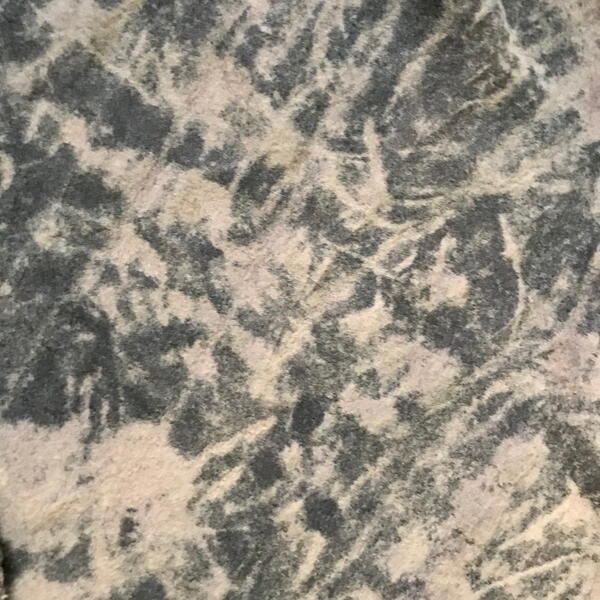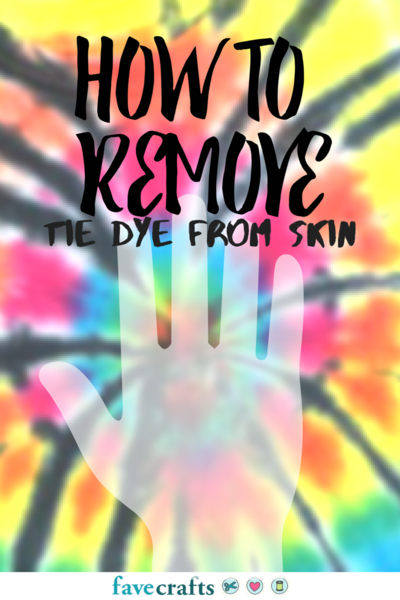How to Tie Dye Polyester
Can you dye polyester? Learn the ins and outs with our tutorial.

Can you tie dye polyester? Yes! Learn the ins and outs with our article on how to tie dye polyester, including sheer fabric, felt, and fleece.
Below you'll find fantastic tips and tricks for getting color to set in fabric comprised of synthetic materials. You'll also learn tips for washing and caring for your dyed materials afterwards.
From the Writer: "Tie-dye is a fun, creative way to add color and patterns to your fabrics! Some materials can be easier to tie-dye than others, depending on the fabric content, thickness, and other factors. Synthetic cloth (particularly polyester and polyester-blends) will often not hold added color as easily as natural materials (like cotton or linen). The fibers are less absorbent, so in many cases additives or special dyes are used to keep the color from running or fading. Use the following guide to determine what supplies and steps to take when tie-dyeing polyester fabric."
Discover more fantastic craft ideas when you sign up for our newsletter:
Quick and Crafty
How to Tie Dye Polyester
Recommended Supplies
Polyester (or polyester-blend fabric)
Fabric dye (powder or liquid)
Rubber bands (or string can be used)
Scissors
Disposable gloves (optional)
Bowls or buckets for dyeing (stainless steel or ceramic work well, but don’t use your nice cooking supplies)
Paper towels
Hot water
Preparing the Fabric
Before you begin the rubber banding and dye steps, first your fabric should be washed and mostly wrinkle-free. This will remove any starches or sizing sprays on the fabric as well as any lint. Clean the material either by hand or in a washing machine, and allow it to dry. Be careful putting polyester in the dryer (you don’t want it to get too hot), as well as when using an iron to remove wrinkles. It can still be slightly damp when you tie dye if it’s taking a while to dry.
Tie-dye generally works best when created with a larger piece of fabric, then cut into smaller pattern pieces after the drying process. If the pieces are cut out before dyeing, they will most likely lose their shape and this will throw the pattern off. While most polyester materials aren’t as easy to stretch out of shape as natural fabrics, they can still change slightly when tie-dyed.
Three polyester fabrics were used for this tutorial: sheer fabric, felt, and fleece.
Blue Polyester Sheer Fabric

White Polyester Felt

Beige Polyester Fleece

Attaching the Rubber Bands
Now the fabric can be “tied” with rubber bands, which will create the negative (non-dyed) space needed for this particular design. There are a variety of sizes and thicknesses of rubber bands available, they’re inexpensive, and can be purchased in assortments. Any rubber bands you decide to use should work, and a little experimentation can help pinpoint which size to use from a variety pack for a desired effect.

There are also several ways to either roll or bunch the cloth before applying the rubber bands, each with slightly different results. Experimenting on smaller pieces of your fabric can help determine which is ideal for your project. Generally, the more layers and more rubber bands used, the more negative (un-dyed) space. Polyester fabrics are sometimes slippery compared to natural fibers, so take your time and be patient when doing this step.
The rubber bands should be attached at spaced intervals to allow the dye to seep into some of the fabric. Make sure they are tight enough that they won’t slip off or come loose. If rubber bands aren’t readily available, string can work as well- just be sure it’s also tied tightly.



Using the Dye
Now the bundled up cloth can be dyed! Cover the surface you are working on so it doesn’t get stained. I prefer to use plastic wrap or a painting drop-cloth, but layers of thick paper can work too. Additionally, paper towels and disposable gloves can help keep your space (and hands!) dye-free.
There are a few kinds of fabric dyes that can be used on polyester, with the most common being powder and liquid. Following the instructions on the package will yield the best results. This will provide information about the correct proportions and temperature of the water to add to dilute the dye. Most will use very hot water when dyeing polyester, so be extra careful during these steps.

Synthetic fabrics should be soaked for longer than cottons and other natural materials. If you pull the bundles out and they don’t look colorful enough, put them back in for a little while longer. Tie-dye will usually dry a little lighter than it looks when it’s removed from the dye pot. Times vary by fabric, so work in increments of 10-15 minutes and then check the saturation.

Tips for Colorfastness
Polyester materials don’t usually soak up and hold dye as easily as other kinds of fabric. It might not ever get as dark from dye when compared to a natural cloth. For this reason, additives like white vinegar and salt can be used at the end of tie-dyeing to help the dye set. Every fabric is different, so testing swatches of your polyester can help determine the right “ingredients” for colorfastness. These extras should be added while the fabric is still submerged in the dye bath, and thoroughly rinsed off at the end.
Finishing the Process
Next, rinse the fabric in cooler water until the water runs more clear. Carefully remove the rubber bands or strings. A pair of scissors works best, and I prefer it over untwisting the rubber bands by hand (which can smear the dye and alter the design). After all of the rubber bands or strings are removed, discard them. Unfold the fabric and place it on a covered workspace to finish drying.
Now the fabric can be laundered again if you prefer. After these steps it might still be wrinkled. If so, iron it after it’s completely dry (and cover your ironing board with a large scrap cloth or old towel to prevent any dye from staining your board cover). Now the material can be cut into smaller pattern pieces for your sewing or craft project!
Tie-Dyed Sheer Polyester Fabric





Tie-Dyed Felt


Tie-Dyed Fleece

This fleece swatch spent longer in the dye bath.

Care and Washing
Tie-dyed polyester fabrics can fade a bit over time with continued washing and wear. Using a gentle detergent and hand-washing can preserve them, but that’s not always practical in every situation. Also be mindful not to mix tie-dyed fabrics with materials that would show any dye that possibly runs off during cleaning. Washing your dyed garments separately and at a low temperature can help prevent this from happening.
Have you had success tie-dyeing polyester or polyester-blend fabrics?
Read Next100+ Tie Dye Patterns and Techniques















